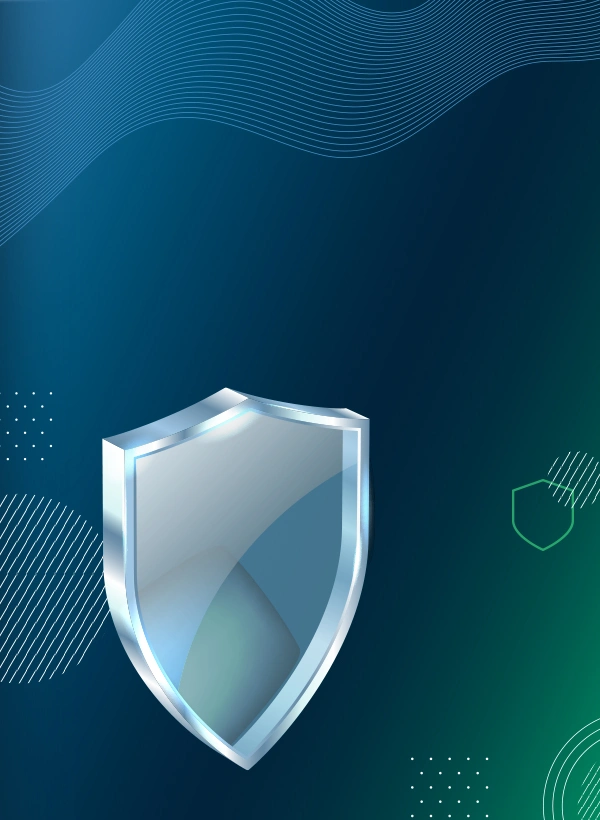.webp)

.webp)


This elementary layer protects physical assets with features such as closed doors, fences, security cameras, backup generators, and geographically varied failover sites.

Protecting data in transit is critical. This layer focuses on encrypting network traffic (both on-premises and in the cloud), effective firewall management, and a strong implementation of authentication and authorization systems.

On application security. Key measures include protecting databases from attacks like SQL injection and hardening other applications against unauthorized access and exploits.

At the core of infrastructure security is the protection of data, regardless of where it is stored or how it is formatted. This involves encrypting data, making regular backups, and using anonymization measures where applicable.
.webp)
This elementary layer protects physical assets with features such as closed doors, fences, security cameras, backup generators, and geographically varied failover sites.
.webp)
Protecting data in transit is critical. This layer focuses on encrypting network traffic (both on-premises and in the cloud), effective firewall management, and a strong implementation of authentication and authorization systems.
.webp)
This layer focuses on application security. Key measures include protecting databases from attacks like SQL injection and hardening other applications against unauthorized access and exploits.
.webp)
At the core of infrastructure security is the protection of data, regardless of where it is stored or how it is formatted. This involves encrypting data, making regular backups, and using anonymization measures where applicable.
Our security testing team takes a hybrid approach, combining automated and human methodologies to improve the efficiency of vulnerability evaluations. We also created IDpass, a secure, user-friendly verification and unlocking mechanism for desktops and apps.

Our vulnerability testing process begins with automated scans carried out by InterSources's security engineers. The scanning tools utilized are adapted to your needs and budget. These programs use vulnerability databases to find known flaws and determine your company's vulnerability to them. This automated technique covers a wide range of potential security vulnerabilities effectively.
.svg)
.webp)
Our security testing team optimizes the automatic scanning technologies and personally checks the data to avoid false positives. This exhaustive hand verification guarantees that you obtain accurate and dependable results, which include only proven vulnerabilities.
.svg)
.webp)
Providing containerized programs and desktops to end users. Kasm's workspaces platform offers enterprise-class orchestration, data loss prevention, and web streaming technologies to bring containerized workloads to your browser.
.svg)
.webp)
Surround your MFA with secure enrollment and recovery for all users, or use our Helpdesk Copilot to confidently authenticate any customer or employee with a single click
.svg)
We provide comprehensive vulnerability assessments to detect security flaws in your systems and applications. This enables you to identify and resolve important hazards before they become exploited.
Penetration testing puts your defenses to the test by simulating real-world attack tactics. This identifies possible breaches and helps you boost your security posture.
Our compliance examinations verify that your firm adheres to industry norms and laws. This reduces legal risk and fosters confidence among parties.
Our specialized SOC team monitors and analyzes your security posture 24/7. They recognize and respond to threats in real time, reducing the harm.
EDR solutions monitor network endpoints for suspicious activity. This enables the speedy identification and removal of malware and other threats.
Using the knowledge of AWS security professionals, we provide complete cloud security services to protect your data and applications in the cloud.
We provide comprehensive vulnerability assessments to detect security flaws in your systems and applications. This enables you to identify and resolve important hazards before they become exploited.
Our team helps you connect your security processes with the National Institute of Standards and Technology's (NIST) Cybersecurity Framework, which is a comprehensive approach to managing cybersecurity risks.
We have knowledge in dealing with numerous data privacy requirements, such as the Data Privacy and Data Protection Act (DPDPA), Data Protection Directive (DPD), Health Insurance Portability and Accountability Act (HIPAA), and General Data Protection Regulation (GDPR). This allows you to secure sensitive data and avoid expensive penalties.

A critical API vulnerability in Shopify’s endpoint was discovered during an audit for a client’s eCommerce platform, as part of Shopify’s Vulnerability Disclosure Program (VDP). The flaw allowed unauthorized staff users to access sensitive gift card data. Using A/B testing, the InterSources team demonstrated how a non-privileged user could manipulate queries to bypass restrictions.
To prevent similar vulnerabilities, InterSources recommended strict server-side authorization, improved query validation, detailed logging, and regular penetration testing.
